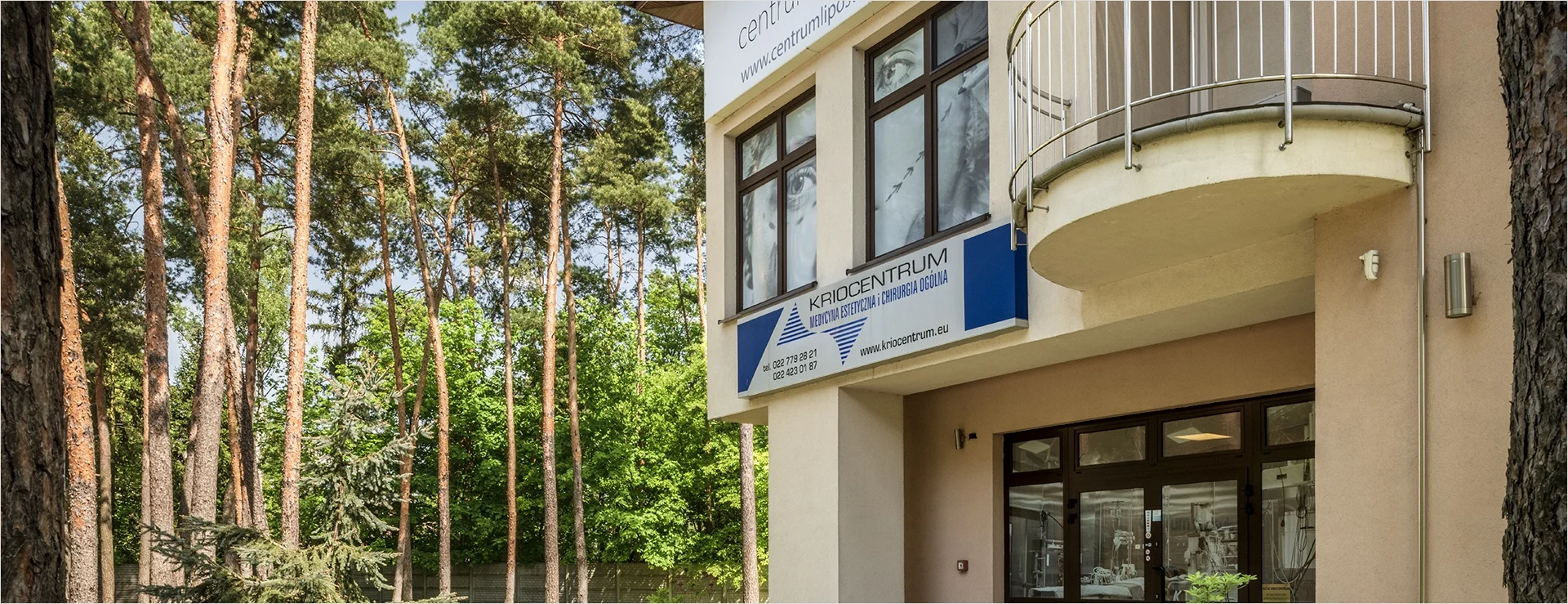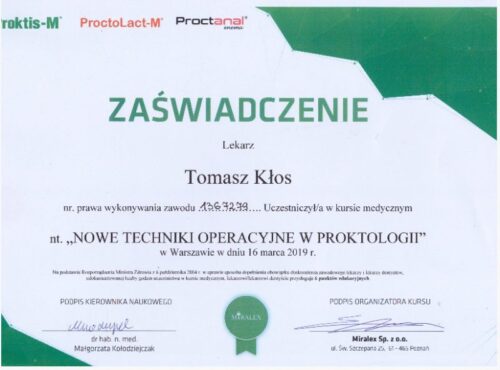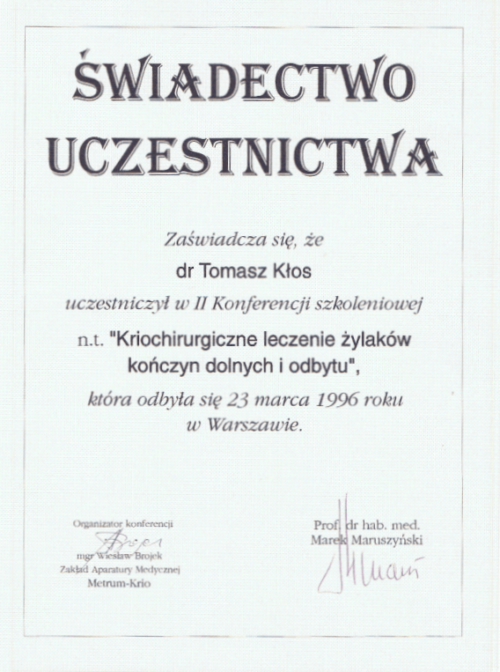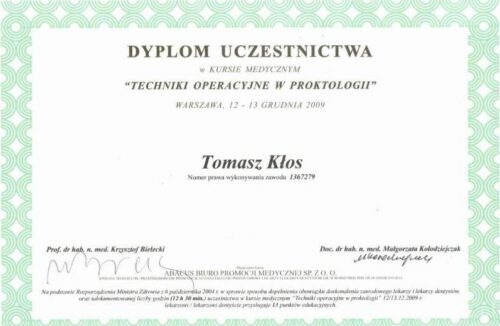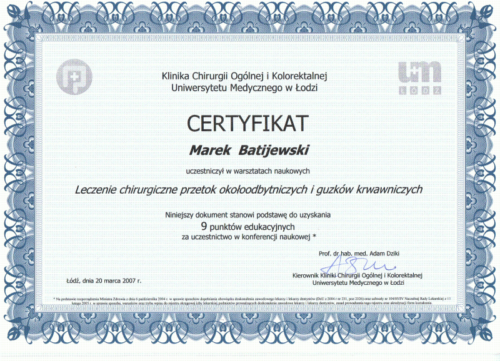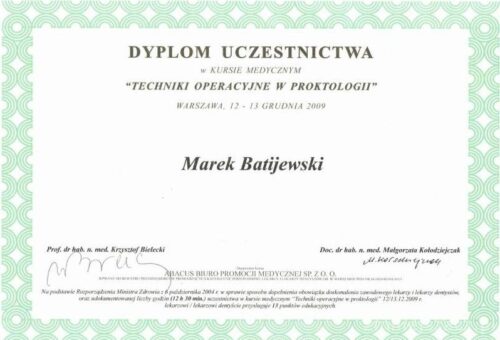Treatment of haemorrhoids
The introduction of new technology in surgery has enabled the development of minimally invasive techniques, and brought new opportunities for therapeutic treatment of hemorrhoids. Treatments have become less burdensome for the patient, painless and feasible in an outpatient setting, without the need for admitting a patient to the hospital. The patients are able to return to their daily routine immediately after surgery. Modern methods also do not require the loading of anesthesia that is necessary to carry out the classic operations, and thus also provide an opportunity to cure patients who do not tolerate spinal anesthesia (the spine) or due to comorbidities, forgo surgery for fear of anesthesia.
The large selection of available therapeutic methods enables individual approach to each patient. The doctor, after collecting a detailed history,performing testing and staging of lesions suggests treatment, which he believes will bring the most favorable therapeutic effect.
The treatment may be carried out in stages – depending on the progression of the disease. Treatments can be carried out at intervals of 2-6 weeks, to supply all the affected nodule hemorrhoids.
1. Method HemoRF (RAFAELO) – It’s the latest currently available treatment. By using a special probe hemorrhoid tissue is subjected to a high-frequency electromagnetic wave with specific properties. Followed by applying precise energy that causes broken capillaries, resulting in shrinkage of hemorrhoid and resignation of ailments. Wall hemorrhoid is fibrosis, an increase its strength. As a result lump becomes resistant to re-stretch, the phenomenon is protects against recurrence of hemorrhoidal disease.
2. The method HemoLT – functions as HemoRF method, however, hemorrhoid tissue at the site of vascular is treated with high-Nd: YAG laser, which in turn leads to coagulation (closure) of the blood and tissue fibrosis hemorrhoids.
3. The method of Barron’s – currently the most popular method of treatment of hemorrhoid nodules. It involves the placement of special rubber bands at the base of the hemorrhoid causing ischemia and necrosis. As a result, after a few days necrotic hemorrhoids peel off and fall off.
4. Sclerotherapy – includes injecting special irritant agent base into the hemorrhoid which closes vessels supplying blood to hemorrhoid and in turn leads to its contraction. This method gives the best results in the early stages of the disease.
In our clinic, there is also the possibility of treating all the affected nodule during a one surgical procedure, assisted by anesthetist. The procedure itself takes about 20 minutes, and the whole stay of the patient in the clinic lasts 1-2 hours.
Bipolar diathermy – it involves treatment of coagulation of tissue and blood vessels hemorrhoids using a special bipolar electrode. Effective, particularly in the more advanced stages of the disease.
Operation LONGO – a method involving the excision of the mucous membrane of the cylinder above the hemorrhoid with afferent blood vessels and pararelly stitching the edges of the cavity by means of a circular stacker. As a result, the fall out bumps are pulled up and due to decreased blood flow are shrinking. In addition, the resulting anastomotic connective scar fixes them to the substrate.





